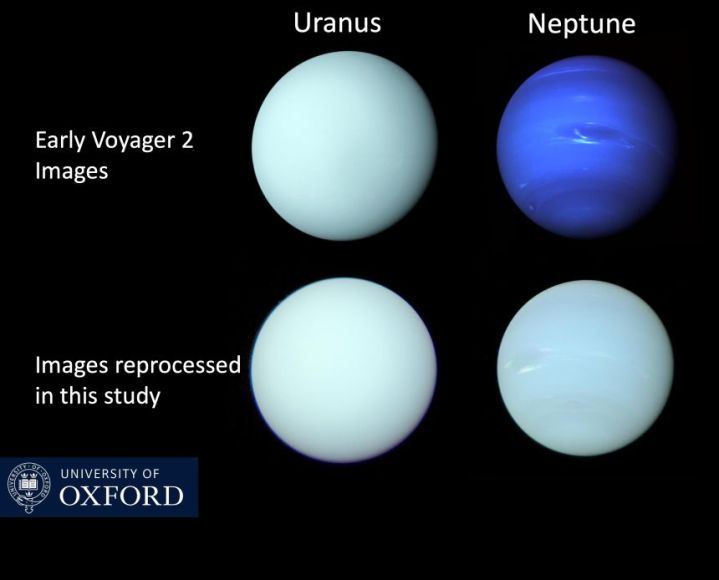Among the most famous images taken by the Voyager spacecraft are those of Uranus and Neptune. When you think of these planets, you’re likely imagining them based on the images taken by Voyager 2 in 1986 and 1989, which show the planets as pale greenish blue and royal blue respectively. But a new study shows that the two planets are a very similar color, both closer to a pale baby blue.
Constructing exact color images of space objects is challenging because of how spacecraft cameras typically work. Instead of capturing a color image, cameras typically take a series of black-and-white images using filters corresponding to different wavelengths. Image processors then layer together these black-and-white images to produce a color image.

It was this processing that resulted in the darker blue color of Neptune. The planet is, in fact, lighter, according to the study’s lead author, Patrick Irwin of the University of Oxford: “Although the familiar Voyager 2 images of Uranus were published in a form closer to ‘true’ color, those of Neptune were, in fact, stretched and enhanced, and therefore made artificially too blue.”
“Even though the artificially saturated color was known at the time amongst planetary scientists – and the images were released with captions explaining it – that distinction had become lost over time. Applying our model to the original data, we have been able to reconstitute the most accurate representation yet of the color of both Neptune and Uranus.”
The newly processed images above show the two planets looking much more similar. The researchers used more recent data from telescopes like Hubble and the Very Large Telescope to balance the original Voyager 2 images. As well as the new colors, the findings also shed light on why Uranus’s color appears different at different points in its orbit — because the planet is tilted almost entirely onto its side, and the reflectivity of its poles affects its brightness.
“This is the first study to match a quantitative model to imaging data to explain why the color of Uranus changes during its orbit,” Irwin said. “In this way, we have demonstrated that Uranus is greener at the solstice due to the polar regions having reduced methane abundance but also an increased thickness of brightly scattering methane ice particles.”
The research is published in Monthly Notices of the Royal Astronomical Society.



